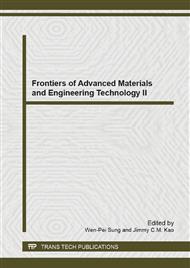p.736
p.740
p.744
p.748
p.753
p.757
p.761
p.765
p.769
Research on the High-Power Directional Acoustic Transducer
Abstract:
Through studying how to affect acoustic directivity with MATLAB software, it show that selection of a relatively larger surface of the transducer and a relatively closer transducer interval will be more preferable for directivity. While an array which possess more array element number and whose frequency of the drive signal can be as large as possible in a range, directivity will be more preferable. On the other hand, when the structure of the sound radiating surface of the transducer or array layout is symmetrical, the corresponding directivity pattern will be symmetrical. At a frequency of 10kHz, the individual rare earth magnetostrictive transducers its first point of the simulation carried out before the test. Sounding board with aluminum by the method used to improve the sound source diameter. With the sound plate diameter incrementing, the smaller the angle of the directivity. The beam width of the 3×3 array is about at 23kHz, and the directivity acute angle is about 10°, with a sounding board by the method used to improve their the diameter of the sound source, so as to realize the sound has directivity is feasible.
Info:
Periodical:
Pages:
753-756
Citation:
Online since:
April 2014
Authors:
Price:
Сopyright:
© 2014 Trans Tech Publications Ltd. All Rights Reserved
Share:
Citation:


